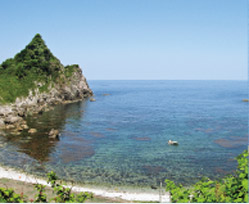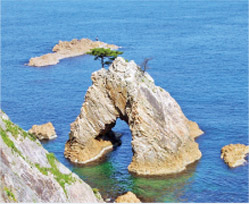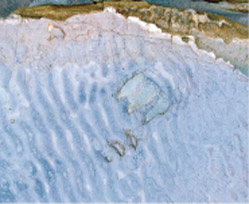Japanese archipelago
San’in Kaigan Geopark maintains many natural and historical formations that span from when the Japanese archipelago was a part of the larger Asian continent in ancient times, to the formation of the Sea of Japan, to the present. The formation of various geographical phenomena at San’in Kaigan Geopark spans three distinct periods: when Japan was still physically attached to the Asian landmass; when Japan detached from Asia and the Sea of Japan was formed; and the period from that time to the present.
When the Japanese archipelago was part of the Asian continent
In ancient days, when dinosaurs roamed the earth, the Japanese archipelago was but a part of the Asian continent.
Volcanoes erupted on the surface of the earth, and magma slowly oozed deep into the ground to form granite.
Volcanoes erupted on the surface of the earth, and magma slowly oozed deep into the ground to form granite.
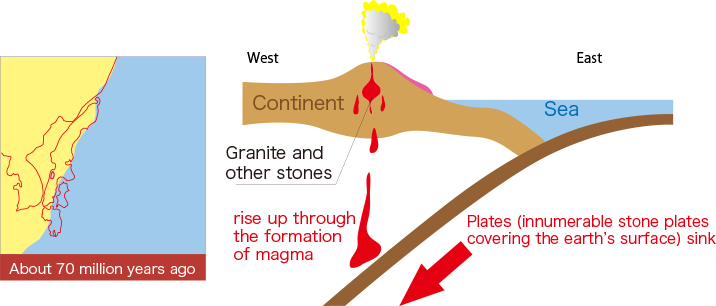

When Japan split from the Asian continent
Tectonic shifts and volcanic activity caused cracks to appear at the edge of the Asian continent. Hollows produced from this rupture gave rise to rivers and lakes, with elephants, deer, and other animals living in these areas. These depressions gradually expanded and produced the Sea of Japan.
Volcanic activity also produced numerous igneous rocks.
Volcanic activity also produced numerous igneous rocks.
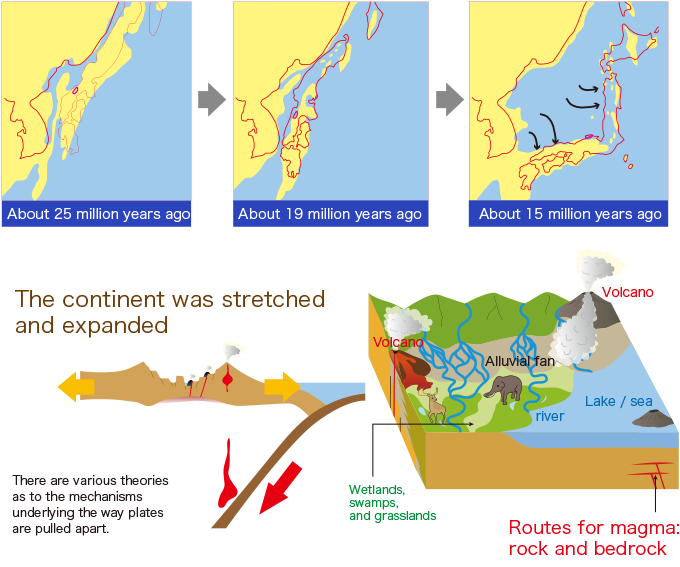

Formation of the Sea of Japan to the present
Once the Sea of Japan stopped expanding, the Japanese archipelago reached largely the shape it is today. Ongoing activity produced various volcanoes, and rias coastlines and terraces were formed by the ocean, with deep ravines and waterfalls in the mountains. Flatlands, basins, and sand dunes developed, and people came to live on these lands.


■Hot springs in the San’in Kaigan Geopark
There are many natural faults in the earth at San’in Kaigan Geopark. Heat deep within the ground warms up water, which then courses through faults and creates hot springs.
■Rias coastlines explained
Rising water levels caused mountains and valleys to be submerged and then become a part of the coastline. These can be seen around the Tajima area of San’in Kaigan Geopark.

